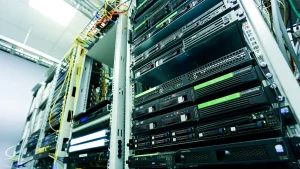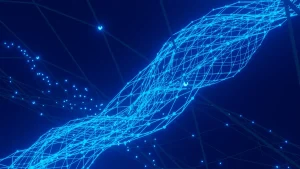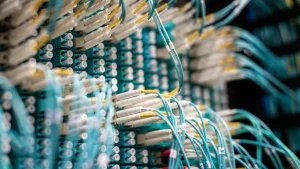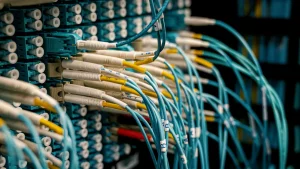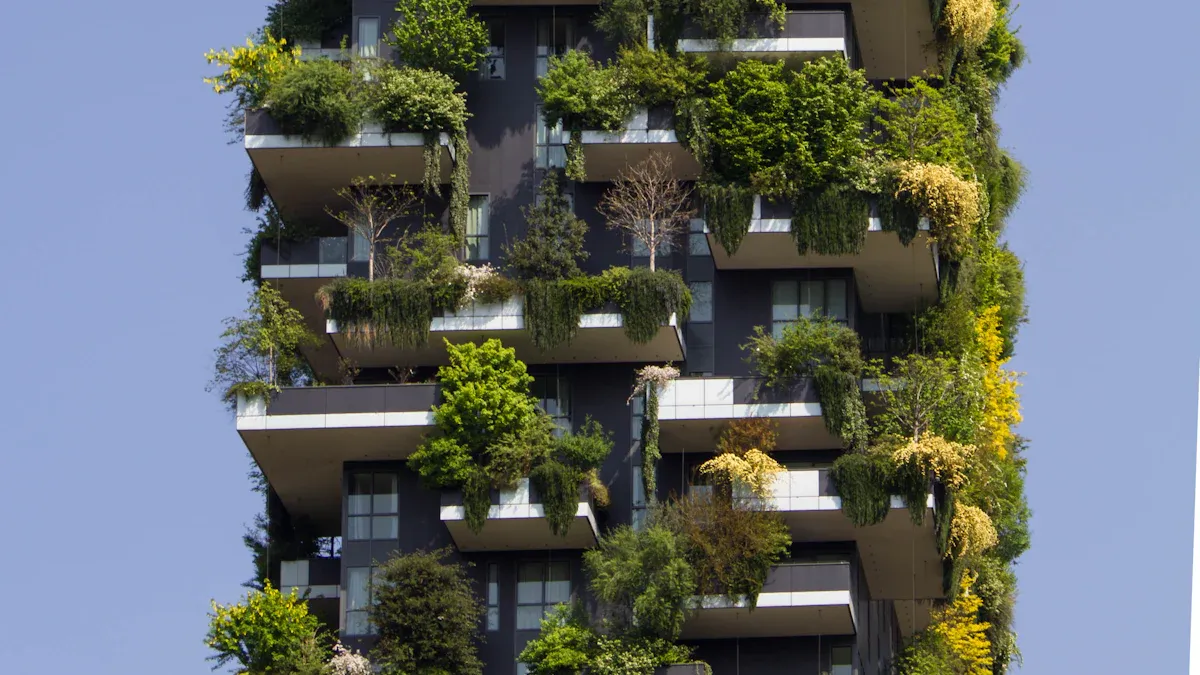
Energy-saving Unidades de Distribuição de Energia play a pivotal role in enhancing energy efficiency across green buildings in Europe. They directly support sustainability goals by reducing energy losses and improving voltage stability. For example, in a 33-bus system, power loss decreased from 0.64 MW to 0.52 MW, while voltage stability rose from 0.970 to 0.980. Businesses adopting these units report up to a 20% cut in energy costs within the first year, showcasing their impact on decarbonization efforts and operational savings.
Key Takeaways
- Energy-saving PDUs can cut energy bills by 20% in one year.
- Picking PDUs with good efficiency helps meet green goals and rules.
- Features like remote monitoring track energy use and find waste fast.
Criteria for Selecting Energy-Saving Power Distribution Units
Energy Efficiency Ratings and Certifications
Energy efficiency ratings and certifications serve as benchmarks for assessing the performance of Power Distribution Units. These certifications, such as Energy Star and ISO 50001, validate the unit’s ability to minimize energy consumption while maintaining operational reliability. Building managers often prioritize PDUs with high efficiency ratings to align with sustainability goals and reduce long-term energy costs. Certified units also simplify compliance with regulatory requirements, ensuring adherence to Europe’s stringent energy standards.
Scalability and Flexibility for Building Needs
Scalability and flexibility are critical for meeting the dynamic requirements of modern green buildings. PDUs designed with modular configurations allow for seamless expansion as energy demands grow. Prefabricated modular data centers, for instance, can be deployed faster than traditional setups, enabling quick adaptability. Leveraging technologies like virtualization enhances resource allocation, ensuring efficient power distribution. Scalable rack configurations also provide flexibility in sourcing hardware from different vendors, optimizing cost savings and operational efficiency.
Dica: Assess workload requirements early to predict future growth and resource needs, especially with the rise of AI workloads in smart buildings.
Advanced Features like Remote Monitoring and Control
Advanced features such as remote monitoring and control have become essential in modern PDUs. These capabilities enable real-time tracking of energy usage, allowing building managers to identify inefficiencies and optimize power distribution. The global Basic PDU market has experienced significant growth due to the increasing demand for reliable power solutions. This trend highlights the importance of integrating advanced features to meet evolving industry needs. Remote monitoring also reduces downtime by enabling proactive maintenance, ensuring uninterrupted operations.
Compatibility with Renewable Energy Systems
Compatibility with renewable energy systems is a key consideration for green buildings. Energy-saving PDUs designed to integrate with solar panels, wind turbines, and other renewable sources ensure efficient energy management. These units often include features like load balancing and energy storage optimization, which maximize the use of renewable energy. By supporting hybrid energy systems, PDUs contribute to reducing reliance on fossil fuels and achieving decarbonization goals. Compatibility also ensures smooth transitions during energy source shifts, maintaining operational stability.
Compliance with European Sustainability Standards
Adhering to European sustainability standards is non-negotiable for energy-saving PDUs. Intelligent rack PDUs equipped with DCIM software facilitate compliance by providing real-time power monitoring and centralized data collection. These systems track environmental parameters like temperature and humidity, ensuring operational efficiency. They also simplify reporting for energy KPIs, making it easier to meet EU Green Deal and Energy Efficiency Directive (EED) requirements. By integrating these features, PDUs help green buildings align with Europe’s ambitious sustainability targets.
A Review of Top Energy-Saving Power Distribution Units
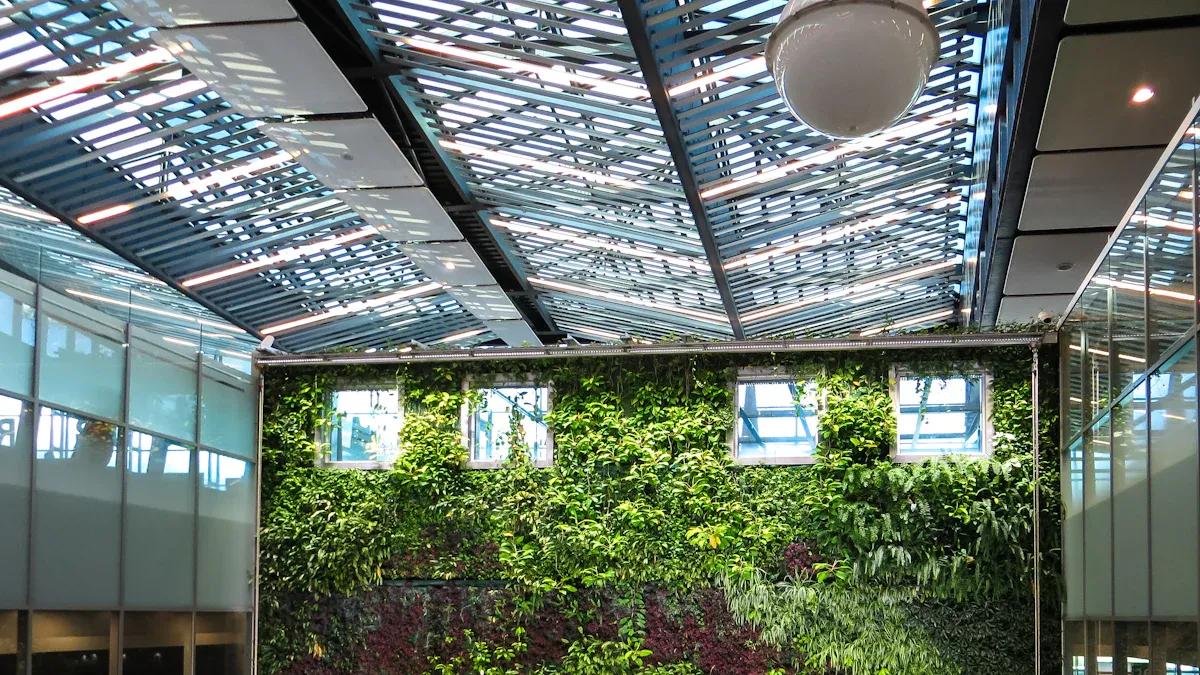
Overview of Leading Brands in Europe
Several brands dominate the European market for energy-saving Power Distribution Units, offering reliable and efficient solutions for green buildings.
- The Blackbird Pro stands out for its robust build quality, which performs well under demanding conditions. Users also appreciate its user-friendly design, requiring minimal technical expertise.
- NBYOSUN products are certified by ISO9001, CE, UL, and RoHS, ensuring compliance with international safety and emission standards. Their advanced remote management features make them ideal for high-density environments.
- Eaton’s G3 Universal PDU provides detailed monitoring capabilities and a durable design, making it suitable for medium-sized facilities.
Key Features and Benefits of Popular Models
Energy-saving PDUs incorporate advanced technologies to enhance efficiency and reliability.
- Models with high-efficiency transformers improve energy efficiency by 2% to 3% compared to standard transformers.
- Real-time monitoring features, like those used by IBM, enable precise energy management, resulting in up to 30% energy savings in data centers.
- Some units, such as those used by eBay, provide detailed energy consumption data, helping organizations reduce operating costs by up to 50%.
Cost-Effectiveness and ROI Analysis
Investing in energy-saving PDUs offers significant financial benefits over time.
- Data center operators report up to 20% reductions in energy consumption when using monitored PDUs.
- Target achieved annual savings of 261,000 kWh by optimizing PDU usage, demonstrating the potential for substantial cost reductions.
- The U.S. General Services Administration saved $13.5 million annually by reducing energy use by 41%, showcasing the long-term ROI of energy-efficient solutions.
Case Studies of Successful Implementations
Real-world examples highlight the transformative impact of energy-saving PDUs in green buildings.
- The RE:FIT Programme in London retrofitted over 660 public sector buildings with energy-saving PDUs. This initiative reduced carbon emissions by over 7,000 tonnes and cut energy consumption by an average of 28% across 42 pilot projects.
- These efforts have generated estimated CO2 savings of 32,000 tonnes annually, demonstrating the scalability and effectiveness of these solutions in achieving sustainability goals.
Benefits of Using Energy-Saving Power Distribution Units in Green Buildings
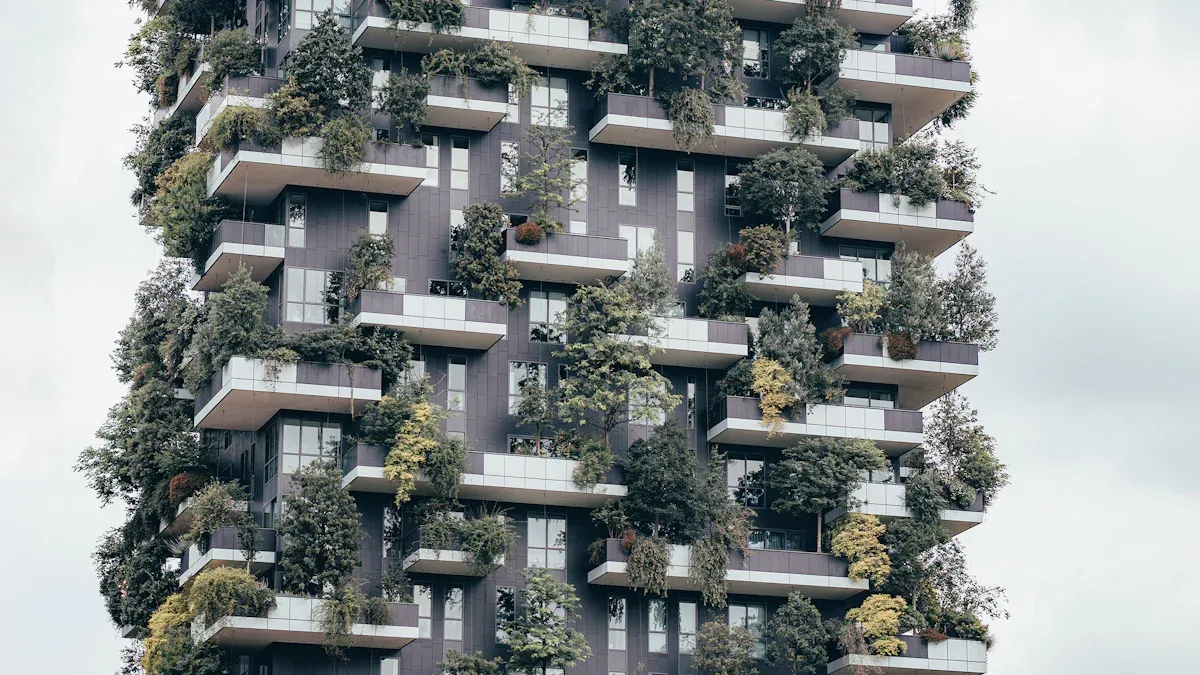
Reduction in Energy Consumption and Costs
Energy-saving Power Distribution Units (PDUs) significantly reduce energy consumption by optimizing power distribution and minimizing waste. These units enable real-time power monitoring, allowing facility managers to identify inefficiencies and implement strategies like load balancing and demand response. Businesses using energy-efficient PDUs report up to a 20% reduction in energy costs within the first year. Additionally, intelligent load management features, such as load shedding during peak demand, further enhance energy efficiency.
Nota: Improved energy efficiency not only lowers operational costs but also contributes to long-term financial sustainability for green buildings.
Lower Carbon Footprint and Environmental Impact
Energy-saving PDUs play a crucial role in reducing the carbon footprint of green buildings. By decreasing energy consumption, these units directly lower greenhouse gas emissions. The environmental benefits of energy-efficient PDUs can be summarized as follows:
| Metric | Description |
|---|---|
| Energy Savings | Reduction in energy usage, measured in kilowatt-hours (kWh) |
| Cost Reduction | Decrease in energy-related expenses for running IT infrastructure |
| Performance Metrics | Ensuring energy efficiency does not compromise performance |
| Carbon Footprint | Reduction in overall carbon emissions associated with operations |
| Return on Investment | Financial savings relative to investment in energy-efficient technologies |
These metrics highlight how energy-saving PDUs align with global sustainability goals by promoting cleaner and greener operations.
Enhanced Operational Efficiency and Reliability
Energy-saving PDUs enhance operational efficiency by providing advanced features like real-time power monitoring and remote management. These features allow building managers to optimize load distribution and identify energy-intensive equipment. The following table outlines key performance data supporting the operational benefits of energy-saving PDUs:
| Feature | Benefit |
|---|---|
| Real-time power monitoring | Enables identification of energy-hungry equipment |
| Remote power management | Allows for optimization of load distribution |
| High-precision energy metering | Facilitates data-driven decisions for efficiency improvement |
By leveraging these capabilities, green buildings can achieve higher reliability and reduce downtime, ensuring uninterrupted operations.
Contribution to Green Building Certifications (e.g., LEED, BREEAM)
Energy-saving PDUs contribute significantly to achieving green building certifications such as LEED and BREEAM. These certifications require buildings to meet stringent energy efficiency and sustainability standards. PDUs equipped with intelligent monitoring systems simplify compliance by tracking energy usage and environmental parameters like temperature and humidity. This data helps building managers demonstrate adherence to certification requirements.
Dica: Investing in energy-efficient PDUs not only supports sustainability goals but also enhances the market value of green buildings by securing prestigious certifications.
Tips for Implementing Energy-Saving Power Distribution Units
Planning and Assessing Power Distribution Needs
Proper planning ensures the successful implementation of energy-saving Power Distribution Units. A systematic approach helps identify critical requirements and avoid inefficiencies. Key steps include:
- Understand critical power load requirements to ensure the PDU can handle peak demands.
- Account for load growth and scalability to accommodate future expansions.
- Assess the existing power infrastructure for compatibility and capacity.
- Implement redundancy to maintain operations during power failures.
- Monitor environmental conditions like temperature and humidity to prevent overheating.
- Prioritize energy efficiency considerations to align with sustainability goals.
- Perform load testing to validate the system’s reliability under real-world conditions.
- Implement power monitoring and management systems for real-time insights.
- Develop emergency and failover plans to minimize downtime.
- Ensure compliance with relevant standards and regulations.
These steps provide a robust foundation for integrating energy-efficient solutions into green buildings.
Best Practices for Installation and Configuration
Adhering to best practices during installation and configuration enhances the performance and safety of PDUs. Consider the following:
- Choose a location that supports the PDU’s weight and allows adequate spacing for maintenance access.
- Inspect electrical connections thoroughly and securely connect incoming and outgoing wires, paying special attention to PE cables.
- Test all connections to mitigate risks and ensure operational safety.
These measures ensure a smooth installation process and reduce the likelihood of operational issues.
Regular Maintenance and Performance Optimization
Regular maintenance maximizes the efficiency and lifespan of energy-saving PDUs. Key performance indicators include:
| Performance Indicator | Statistic/Result |
|---|---|
| Energy Efficiency Improvement | 20% increase in data center efficiency |
| Cost Savings | Up to 20% reduction in energy costs |
| Enhanced Monitoring Capabilities | Real-time monitoring of energy consumption |
| Improved Power Usage Effectiveness (PUE) | Insights from monitoring inform capacity expansion plans |
Routine inspections, firmware updates, and cleaning of components help maintain optimal performance. Monitoring energy consumption trends also aids in identifying areas for further optimization.
Training Staff for Effective Use of PDUs
Training staff ensures the efficient use of energy-saving PDUs. Building managers should organize workshops to familiarize employees with the PDU’s features, such as remote monitoring and load balancing. Providing user manuals and hands-on training sessions enhances their ability to troubleshoot issues and optimize energy usage. Skilled staff contribute to better energy management and reduced operational costs.
Energy-saving Power Distribution Units are essential for advancing energy efficiency in green buildings. They help reduce energy waste, lower operational costs, and support Europe’s ambitious sustainability goals. By adopting these innovative solutions, businesses can contribute to a greener future while enhancing building performance and achieving long-term financial benefits.
FAQ
What are the key benefits of energy-saving PDUs in green buildings?
Energy-saving PDUs reduce energy consumption, lower operational costs, and enhance efficiency. They also support sustainability goals and contribute to certifications like LEED and BREEAM.
How do energy-saving PDUs integrate with renewable energy systems?
These PDUs optimize energy storage and load balancing. They ensure seamless integration with solar panels, wind turbines, and hybrid systems for efficient energy management.
Are energy-saving PDUs cost-effective for small buildings?
Yes, they provide long-term savings by reducing energy waste. Scalable designs allow small buildings to adopt these units without overspending on unnecessary capacity.
